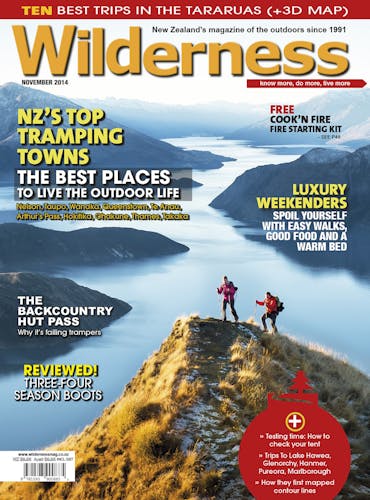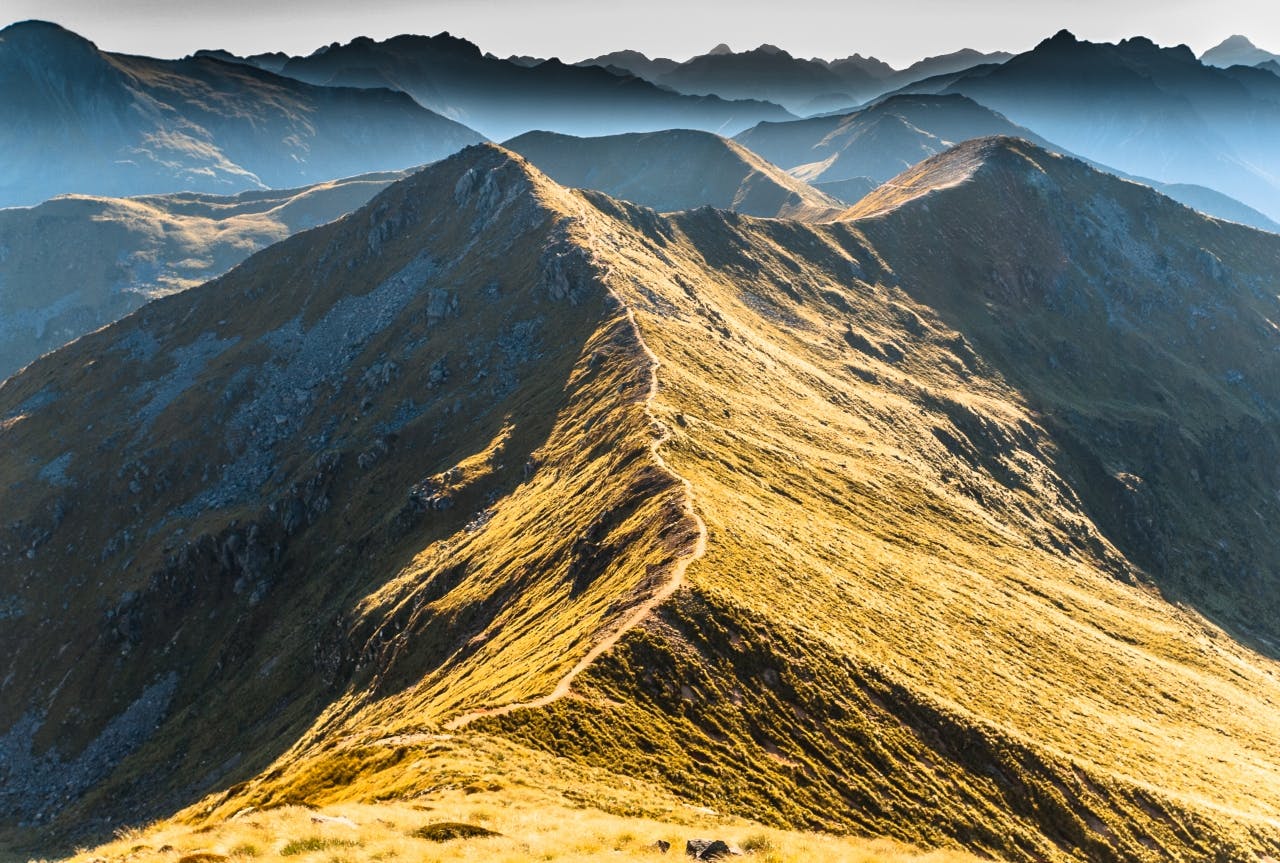Edith Leigh speaks to Wanaka-based trampers who wouldn’t let wild elephants drag them away from the town.
Ask any Wanaka resident if they can see themselves living anywhere else and ninety-nine percent of them wouldn’t even dream of it.
Phrases like ‘outdoor Mecca’ and ‘love it’ crop up in every conversation.
“I’ll be here till I die,” says keen tramper and hunter Bruce McLean, who moved to Wanaka from Dunedin seven years ago.
“I love the energy it has for the outdoors, it infects people. You can’t go anywhere without seeing somebody exercising out there.”
McLean says he has done a lot of trips in the past seven years, including taking his two teenage boys out tramping, but still feels like he hasn’t even touched the surface of what’s available close to home.
Upper Clutha Tramping Club president Karen Marinkovic, who has lived in Wanaka for seventeen years, says it would take a lifetime to explore all of Wanaka’s tramping destinations.
Mt Aspiring National Park, near Wanaka, is the country’s third biggest national park, but the town is also quite literally surrounded by conservation areas offering a huge variety of terrain. The outdoor country ranges from steep, bush-clad mountains, to open tussock high country, to the flat-topped block mountains of Central Otago.
Close to town are walks and bike tracks alongside the lake and Clutha River, Mt Iron and the Diamond Lake Conservation Area. Slightly further afield are the Matukituki Valley, the Makarora region, the 105,000ha Hawea Conservation Park, the 23,000ha Pisa Conservation Area and another 12,000ha encompassing five conservation areas to the west of Wanaka. That’s a lot of tramping country but, if you want more, Queenstown tracks are just an hour away, Mackenzie Country is easily accessed through the Lindis Pass, and the tenure review process is opening up new areas all the time.
Marinkovic says she organises about nine winter tramping club day walks every year and, in the past ten years, she has hardly repeated a walk.
Aside from such a smorgasboard of tramps, Marinkovic loves the four distinct seasons Wanaka experiences. Spring is ushered in with “gorgeous, sunny days” and when Marinkovic spoke to Wilderness last month, the town was “on day twenty-four of fabulous, sunny, wonderful, blue sky days”.
Summer is hot and dry; autumn’s cold temperatures mean intense, beautiful colours; and winter is exciting, with snow on the mountain tops bringing skiing and spectacular scenery.
Outdoor opportunities in Wanaka don’t just stop at tramping. The town is becoming a hub for mountain bikers, with bike parks such as Sticky Forest, and a big choice of tracks such as the purpose-built Deans Bank Track, Glendhu Bay Track, and a brochure full of other options.
Rock-climbing was established at Hospital Flat, just 12km from town, in the 1970s and has since exploded with new crags, routes and bouldering opening up all the time. Diamond Lake and the Riverside and Roadside recreation areas are all close to town, but there is plenty more within easy driving distance.
In winter there is skiing and in warmer weather the lake is great for kayaking, paddle-boarding, sailing, boating, fishing. “There is just so much,” says Marinkovic. So much, that it can be hard to choose and tramping can find itself on the back seat.
For a small town there is also a good variety of theatre and concert events on. On some day tramps “we’ve got to make sure we’re back in time”. Wanaka’s pace of life is generally a little slower than that of nearby Queenstown. But while its nightlife might not have the same attraction, it can boast better weather. South-facing Queenstown cops the winds coming straight up the lake, which then hit the Crown Range and Harris Mountains and head right over the top of Wanaka.
While every Wanaka resident can wax lyrical about the outdoor opportunities the area offers, they are all a little more subdued when it comes to the cost of living.
For people who are not big earners it can be difficult, say residents. Just one supermarket means higher food prices and when it comes to housing, Wanaka is second only to Auckland.
Harcourts Wanaka manager Grant Parker says the median house price in Wanaka is $486,000 and the median cost of renting is $388 per week. “Tricky”, is how Parker describes the rental market, particularly when seasonal summer and winter workers flood the town.
For those looking to buy, an entry-level three-bedroom home in Wanaka is likely to cost you $400,000, although prices do drop a little for those happy to live a short drive from town in the likes of Hawea. According to Parker, however, the town is in a real growth phase. “You can’t turn a corner without seeing a bulldozer or new home being built.
“All up it’s a really exciting place to live at the moment. The energy is incredible.”
Wanaka is primarily a tourist town, so tourism and hospitality account for lots of jobs. But that doesn’t mean there are not other opportunities. The building boom is bringing in tradespeople, and the town has traditionally attracted people whose work or business allows them to work from home. Wanaka is working hard to win Chorus’ gigatown competition to bring more IT businesses to the region.
It’s also popular with retirees, and retired farmer Brian Cleugh says life couldn’t be better. The Matukituki Valley “is almost a second home” and during winter there are three ski fields in close proximity.
All in all, it’s enough to make any tramper or keen outdoors person up sticks and head south and inland.








